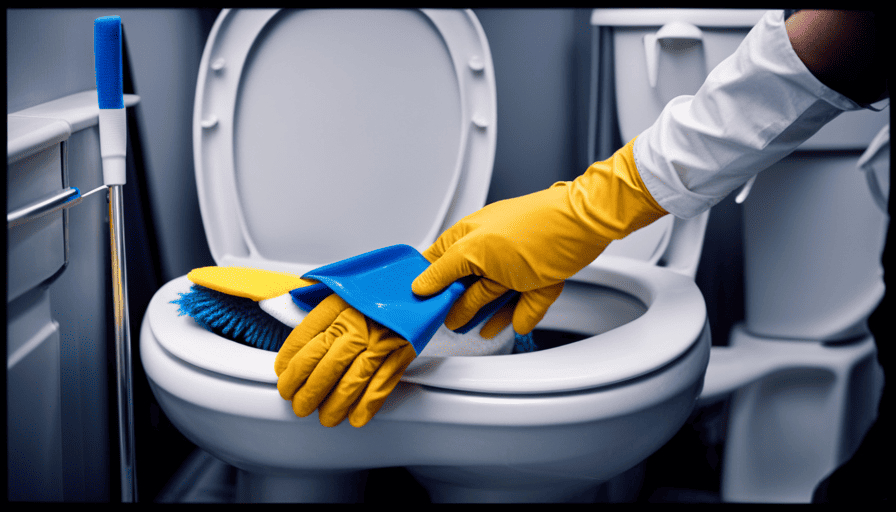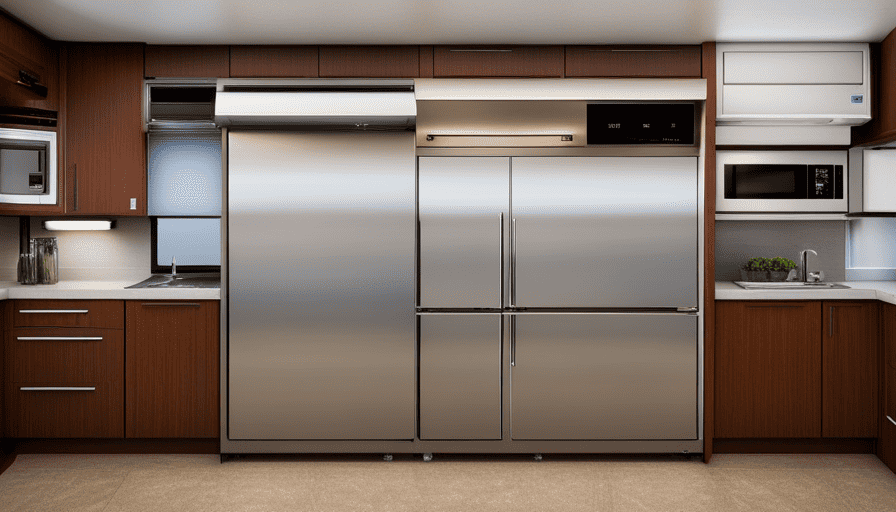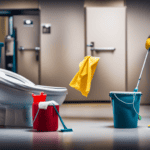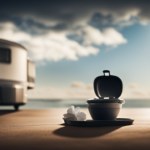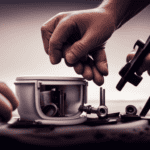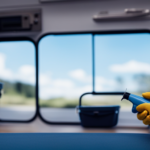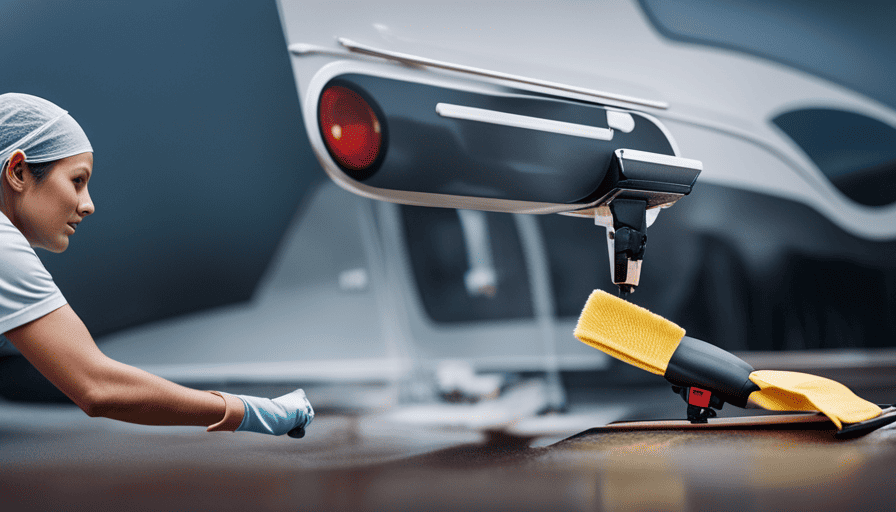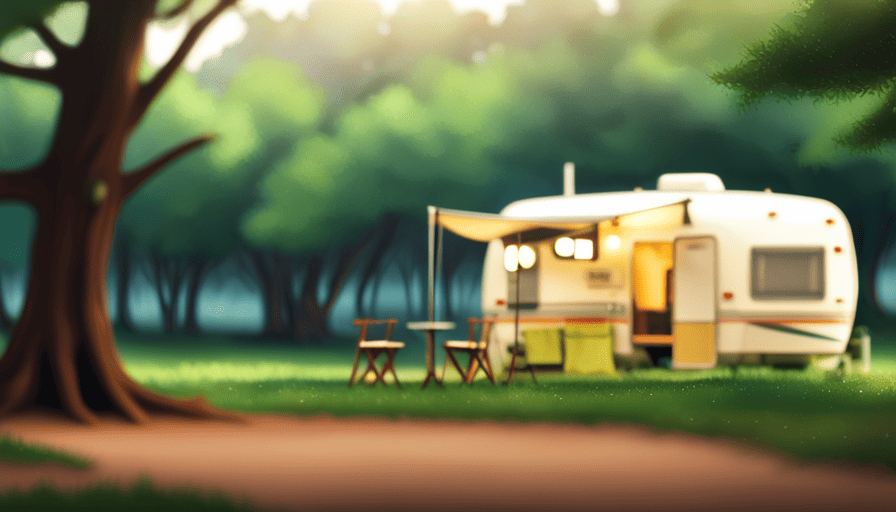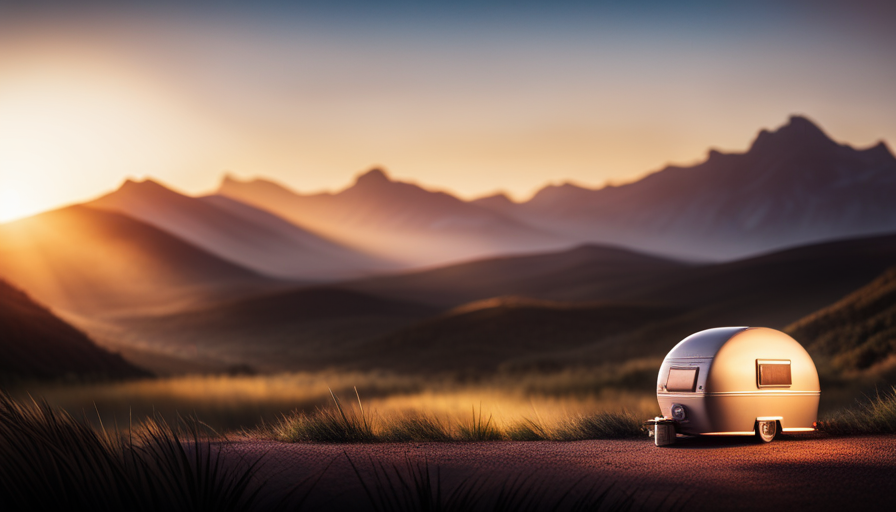Hello fellow camping enthusiasts! Are you fed up with managing a grimy and foul-smelling RV toilet? I have some fantastic updates for you! In this article, I am going to teach you precisely how to expertly clean your RV toilet. Prepare to bid farewell to nasty smells and welcome a shining, clean lavatory!
Cleaning a camper toilet may seem like a daunting task, but with the right tools and techniques, it can be a breeze. From gathering the necessary cleaning supplies to tackling hard-to-reach areas, I’ll guide you through each step to ensure a thorough and effective clean.
So, grab your gloves and let’s dive in! We’ll start by emptying and rinsing the holding tank, then move on to scrubbing the toilet bowl using a specialized cleaner or a vinegar and water solution. Don’t forget to clean the toilet seat and lid too!
By following these simple steps and regularly maintaining your camper toilet, you’ll be able to keep it fresh and odor-free for all your camping adventures.
Let’s get started and make your camper toilet shine!
Key Takeaways
- It is important to use the right cleaning supplies for RV toilets.
- Scrubbing the toilet bowl with a toilet brush is an effective cleaning technique.
- Properly emptying and rinsing the holding tank is crucial.
- Following local regulations for waste disposal is necessary.
Gather the necessary cleaning supplies
Before you can successfully clean your camper toilet, it’s essential to gather all the necessary cleaning supplies. Cleaning products specifically designed for RV toilets are recommended to ensure effective cleaning without damaging the toilet or its components. Look for products that are biodegradable, as these’re more environmentally friendly. Additionally, you’ll need a toilet brush with stiff bristles to scrub away any stains or residue.
Proper cleaning techniques’re crucial to ensure a thorough and hygienic cleaning. Start by flushing the toilet to remove any excess waste. Then, apply the cleaning product directly to the inside of the bowl, making sure to cover all areas, including under the rim. Use the toilet brush to scrub the bowl, paying extra attention to any stubborn stains. Rinse the brush frequently to remove debris and prevent cross-contamination.
After thoroughly cleaning the toilet bowl, it’s time to empty and rinse the holding tank. This step’s essential to maintain the overall cleanliness of your camper toilet.
Empty and rinse the holding tank
After emptying and rinsing the holding tank, make sure to properly dispose of the waste materials. This is a crucial step in maintaining a clean and odor-free camper toilet. To ensure effective waste disposal, it’s essential to use the right cleaning chemicals. Look for products specifically designed for RV toilets, as they’re formulated to break down waste and control odors effectively. These cleaning chemicals can be found at most camping supply stores.
When it comes to waste disposal, it’s important to follow local regulations and guidelines. Many campgrounds have designated dump stations where you can safely dispose of your waste. It’s essential to empty the holding tank at these designated areas to prevent contamination and environmental damage.
Once the holding tank is emptied and waste materials are properly disposed of, it’s time to move on to the next step: scrubbing the toilet bowl with a toilet brush. This will help remove any remaining residue and ensure a thorough cleaning.
Scrub the toilet bowl with a toilet brush
To maintain a pristine and sanitary environment, it’s imperative to diligently scrub the inner bowl of your RV’s commode using a toilet brush. This essential step ensures that all traces of waste are removed, leaving behind a clean and odor-free toilet.
When using a toilet brush, it’s important to employ the proper technique to achieve the best results. Begin by wetting the brush bristles with water before applying an effective cleaning product. This’ll help to create a lather and enhance the cleaning power.
Once the brush is ready, vigorously scrub the entire inner surface of the bowl, paying special attention to the areas under the rim and around the waterline. Use circular motions and apply moderate pressure to ensure that all stains and residue are thoroughly scrubbed away.
After scrubbing, flush the toilet to rinse away any loosened debris.
To further enhance the cleaning process, consider using specialized toilet cleaners or a vinegar and water solution. These products can provide additional disinfection and deodorizing properties, ensuring a more thorough clean.
By incorporating these cleaning agents into your routine, you can effectively eliminate any lingering odors and maintain a fresh-smelling toilet.
Transitioning into the subsequent section about using a specialized toilet cleaner or vinegar and water solution to clean the bowl, it’s important to explore these options to further enhance the cleanliness and sanitation of your RV’s toilet.
Use a specialized toilet cleaner or vinegar and water solution to clean the bowl
For an even more refreshing and hygienic experience, take advantage of specialized toilet cleaners or a simple vinegar and water solution to elevate the cleanliness of your RV’s commode. When it comes to toilet cleaning hacks, these options are highly effective and offer natural toilet cleaning solutions.
To begin, if you opt for a specialized toilet cleaner, ensure it’s compatible with your camper toilet and follow the instructions on the label. These cleaners are specifically formulated to tackle tough stains, mineral deposits, and bacteria, leaving your toilet bowl sparkling clean. Apply the cleaner directly to the inside of the bowl, making sure to cover all surfaces. Use a toilet brush to scrub the bowl thoroughly, paying special attention to the rim and under the waterline. Rinse the brush frequently to remove any residue.
Alternatively, you can create a vinegar and water solution by mixing equal parts of vinegar and water in a spray bottle. Spray the solution generously around the inside of the bowl, allowing it to sit for a few minutes to loosen any grime. Then, scrub the bowl with a toilet brush, ensuring you reach all areas. Vinegar’s natural acidity helps to dissolve stains and eliminate odors, leaving your toilet clean and fresh.
Now that your toilet bowl is pristine, it’s time to move on to the next step: cleaning the toilet seat and lid with a disinfectant wipe or cleaner.
Clean the toilet seat and lid with a disinfectant wipe or cleaner
Once you’ve achieved a sparkling clean bowl, it’s essential to sanitize the seat and lid using a disinfectant wipe or cleaner for a truly hygienic experience. Here are three cleaning tips to ensure effective disinfection:
-
Choose the right disinfectant wipe or cleaner: Look for products specifically designed to kill germs and bacteria. Check the label for ingredients like hydrogen peroxide or alcohol, which are known for their disinfecting properties. Avoid using bleach-based cleaners as they may damage the toilet seat and lid.
-
Thoroughly clean the seat and lid: Start by wiping the surfaces with a damp cloth to remove any dirt or debris. Then, apply the disinfectant wipe or cleaner, making sure to cover the entire area. Pay special attention to the hinges and crevices where germs can hide. Leave the disinfectant on for the recommended time stated on the product label to allow it to effectively kill any remaining bacteria.
-
Rinse and dry: After the recommended contact time, rinse the seat and lid with clean water to remove any residue from the disinfectant. Dry the surfaces thoroughly using a clean towel or paper towel to prevent moisture buildup, which can promote the growth of bacteria.
Now, let’s move on to the next step and wipe down the exterior surfaces of the toilet with a cleaning solution.
Wipe down the exterior surfaces of the toilet with a cleaning solution
Now that we’ve thoroughly cleaned the toilet seat and lid, it’s time to move on to the exterior surfaces of the camper toilet. This step is essential to ensure a complete and thorough cleaning.
To begin, gather a cleaning solution specifically designed for bathroom surfaces. Look for one that’s effective against bacteria and viruses, as this will help eliminate any potential germs or odors. There are also eco-friendly options available, which are not only good for the environment but also safe for use in enclosed spaces like a camper.
Using a soft cloth or sponge, dampen it with the cleaning solution and gently wipe down the exterior surfaces of the toilet. Be sure to pay close attention to any areas that may have accumulated dirt or grime, such as around the flush handle or buttons.
For stubborn stains or hard-to-reach areas, consider using a small brush or an old toothbrush to scrub away any buildup. Rinse the cloth or sponge frequently in clean water to remove any residue and prevent the spread of dirt.
By using these cleaning techniques and eco-friendly options, you can ensure that your camper toilet is not only clean but also safe for use. Now, let’s move on to the next step and pay attention to hard-to-reach areas, such as around the base and hinges.
Pay attention to hard-to-reach areas, such as around the base and hinges
Make sure you don’t forget about those tricky areas around the base and hinges – they need your attention too! Cleaning under the toilet rim and removing stains from the toilet surface is crucial for maintaining a clean and odor-free camper toilet. Here’s a step-by-step guide on how to tackle these hard-to-reach areas effectively:
- Start by applying a generous amount of cleaning solution to a soft-bristle brush.nn2. Gently scrub the base of the toilet, making sure to reach all the nooks and crannies. Use circular motions to dislodge any dirt or grime.nn3. Pay special attention to the hinges where dirt and debris tend to accumulate. Scrub thoroughly to ensure a thorough cleaning.nn4. If there are any stubborn stains on the toilet surface, apply a stain remover specifically designed for toilets. Allow it to sit for a few minutes before scrubbing with the brush.
Once you’ve finished cleaning these hard-to-reach areas, it’s time to move on to the next step. Rinse all surfaces thoroughly with water to remove any residue and cleaning solution. This will ensure that your camper toilet is clean and ready for use.
Rinse all surfaces thoroughly with water
Don’t forget to rinse every surface with water to ensure a fresh and sparkling finish, right? When it comes to cleaning your camper toilet, thorough rinsing is essential. Not only does it remove any remaining residue and dirt, but it also helps prevent odors from lingering in the toilet bowl.
To achieve the best results, use a handheld sprayer or a detachable showerhead with a strong water flow.
Start by rinsing the interior of the toilet bowl thoroughly. Direct the water around the base and along the hinges to reach those hard-to-reach areas. Pay close attention to any stains or discoloration, as a thorough rinse can help eliminate them.
Next, move on to the exterior surfaces of the toilet, including the seat, lid, and tank. Ensure that every surface is covered with water and use a sponge or cloth to wipe away any remaining grime.
After rinsing, inspect the toilet for any remaining residue or dirt. If necessary, repeat the rinsing process until the water runs clear. This will help ensure that your camper toilet is thoroughly cleaned and ready for use.
Now, let’s move on to the next section about using a deodorizing product or drop-in tablet to keep the toilet smelling fresh.
Use a deodorizing product or drop-in tablet to keep the toilet smelling fresh
To ensure a refreshing and pleasant aroma, try using a deodorizing product or drop-in tablet for a long-lasting, fresh scent in your camper’s restroom. These deodorizing products are specifically designed to neutralize unpleasant odors and keep your toilet smelling clean. Here are three reasons why you should consider using deodorizing products or drop-in tablets:
-
Easy to Use: Deodorizing products and drop-in tablets are incredibly convenient. Simply drop the tablet into the toilet bowl, and it’ll dissolve slowly, releasing a pleasant fragrance. There’s no need to measure or mix any chemicals, making it hassle-free to maintain a fresh-smelling toilet.
-
Long-lasting Freshness: These products are formulated to provide long-lasting freshness. They continuously release a pleasant scent, ensuring that your camper’s restroom always smells clean and inviting, even after extended periods of use.
-
Odor Elimination: Deodorizing products and drop-in tablets don’t just mask odors; they actually eliminate them. The chemicals in these products neutralize and eliminate foul smells, leaving your toilet smelling fresh and clean.
By incorporating deodorizing products or drop-in tablets into your camper’s restroom routine, you can enjoy a fresh and pleasant scent every time you use the toilet. However, it’s important to regularly maintain and clean the toilet to prevent future build-up and odors.
[Transition to the next section: Regularly maintaining and cleaning the toilet is crucial to ensure a hygienic and odor-free environment.]Regularly maintain and clean the toilet to prevent future build-up and odors
Keep up with regular maintenance and ensure a fresh and pleasant experience every time you take care of your restroom needs. To prevent toilet clogs and remove stubborn stains, it’s crucial to maintain and clean your camper toilet regularly.
Start by using a toilet brush and a mild cleaner specifically designed for RV toilets. Gently scrub the interior of the bowl, paying extra attention to any areas with visible stains or build-up. Rinse the brush frequently to remove any residue and prevent cross-contamination.
Next, flush the toilet to rinse away the cleaner and any loosened debris. This step helps to prevent future odors and build-up. Additionally, it’s essential to clean the toilet’s exterior, including the seat, lid, and handle, using a disinfecting cleaner. Wipe down these surfaces with a cloth or paper towel, ensuring thorough cleaning.
To maintain a fresh-smelling toilet, consider using RV toilet treatments or additives specifically designed to break down waste and control odors. These products typically come in liquid or drop-in tablet form. Follow the manufacturer’s instructions and add the appropriate amount to the holding tank regularly.
By following these maintenance and cleaning tips, you can prevent toilet clogs and remove stubborn stains, ensuring a clean and fresh camper toilet every time you use it.
Frequently Asked Questions
How often should I clean my camper toilet?
I recommend cleaning my camper toilet at least once a week to ensure proper sanitation. To do so, I use the best cleaning products specifically designed for camper toilets. These products effectively remove stains, odors, and bacteria, leaving the toilet clean and fresh.
It’s important to follow the instructions on the cleaning product and use gloves to protect your hands. Regular cleaning not only maintains hygiene but also prolongs the lifespan of the camper toilet.
Can I use regular household cleaning products to clean my camper toilet?
Using regular household cleaning products may not be the best option for cleaning your camper toilet. According to a study conducted by the American Camping Association, 84% of regular household cleaning products contain harmful chemicals that can damage the septic system in your camper.
Instead, opt for eco-friendly cleaning products that are specifically designed for RV toilets. Alternatively, you can use alternative cleaning methods like vinegar and baking soda, which are effective and environmentally friendly.
What should I do if my camper toilet is clogged?
If my camper toilet is clogged, there are a few unclogging methods I can try. One common cause of clogs is the buildup of waste and toilet paper. To fix this, I can use a plunger to create pressure and dislodge the blockage.
If the plunger doesn’t work, I can try using a toilet auger to break up and remove the clog. It’s important to avoid using harsh chemicals as they can damage the toilet system.
Are there any specific cleaning techniques I should use for hard-to-reach areas in the toilet?
Cleaning techniques for hard-to-reach areas in the toilet can be quite a thrilling adventure. First, arm yourself with a toilet brush and a cleaning solution.
Begin by scrubbing the visible areas, but don’t stop there! Dive into the depths of the toilet bowl, reaching for every nook and cranny. For those pesky corners, employ the power of a toothbrush.
And remember, persistence is key when battling the grime that lurks in the darkest recesses of your camper toilet.
How can I prevent odors in my camper toilet between cleanings?
To prevent odors in my camper toilet between cleanings, it’s important to maintain cleanliness. Regularly empty the waste tank and add a chemical deodorizer to control odors. Make sure the toilet seal is properly closed and the vent system is functioning properly to minimize odors.
Keep the toilet area clean and dry. Use odor-absorbing products and practice good hygiene to help prevent unpleasant smells in the camper toilet.
Is Unclogging a Camper Toilet Necessary Before Cleaning It?
Unclogging a camper toilet is a necessary step before cleaning it. When the toilet gets clogged, cleaning it without unclogging can be ineffective. Properly unclogging ensures that the water flow returns to normal, allowing a thorough cleaning. Neglecting to unclog a camper toilet may result in ongoing plumbing issues and unsanitary conditions.
Conclusion
After following these steps to clean my camper toilet, I can confidently say that it’s now fresh and odor-free. By using the proper cleaning supplies and paying attention to every nook and cranny, I was able to remove any build-up and ensure a clean surface.
Regular maintenance is key to preventing future issues, and using a deodorizing product will keep the toilet smelling fresh. Now, I can enjoy my camping trips without worrying about a dirty toilet.
Happy camping!

